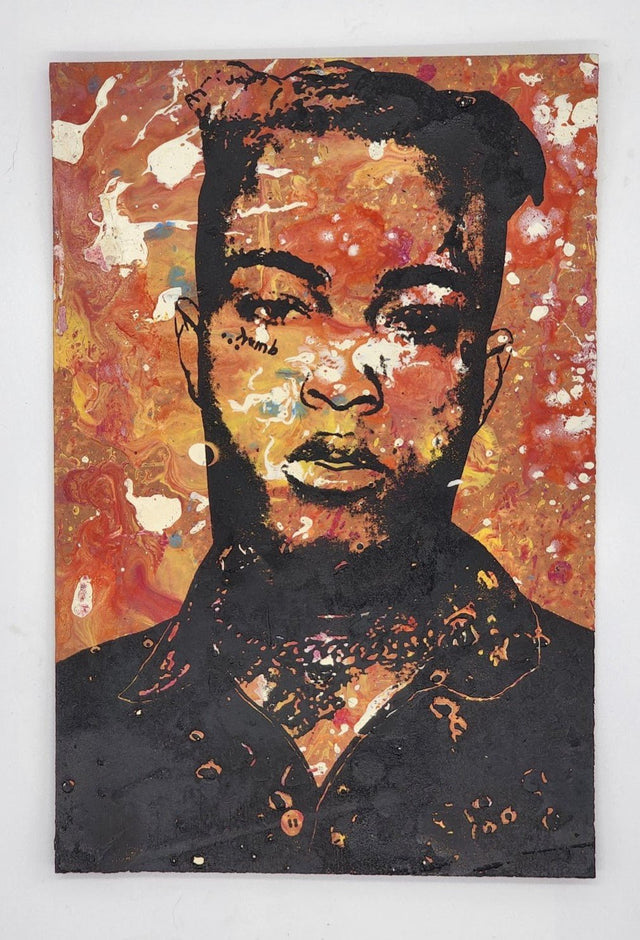
Man Male
-
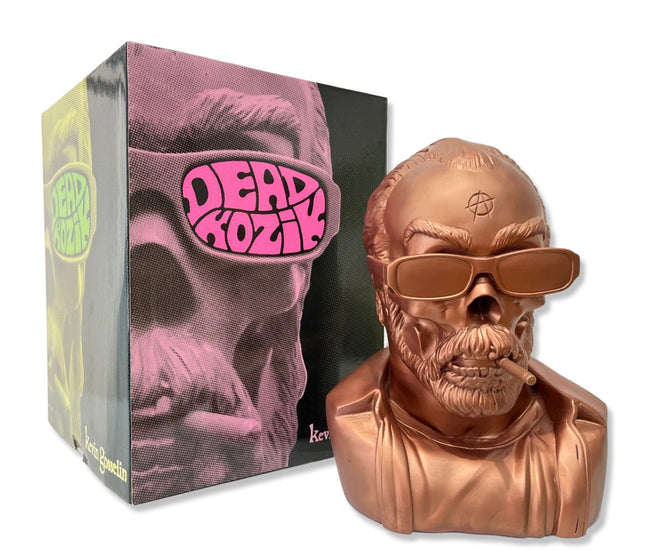
Frank Kozik Dead Kozik Bronze Art Toy by Frank Kozik x Kevin Gosselin
Dead Kozik- Bronze Limited Edition Vinyl Art Sculpture Collectible Artwork by Modern Pop Culture Artist Frank Kozik x Kevin Gosselin. 2012 Limited Edition of 50 "Bronze" Vinyl Bust of a Skeleton Frank Kozik Smoking. RIP. Dead Kozik by Frank Kozik Design and Sculpt by Kevin Gosselin Produced by 3D Retro Limited to 50 Produced Bronze Edition Soft Vinyl Size: 15" Tall The Dead Kozik Bust was designed and sculpted by Kevin Gosselin for the Kozik Tribute Show at the 1 AM Gallery in San Francisco in 2012
$477.00
-
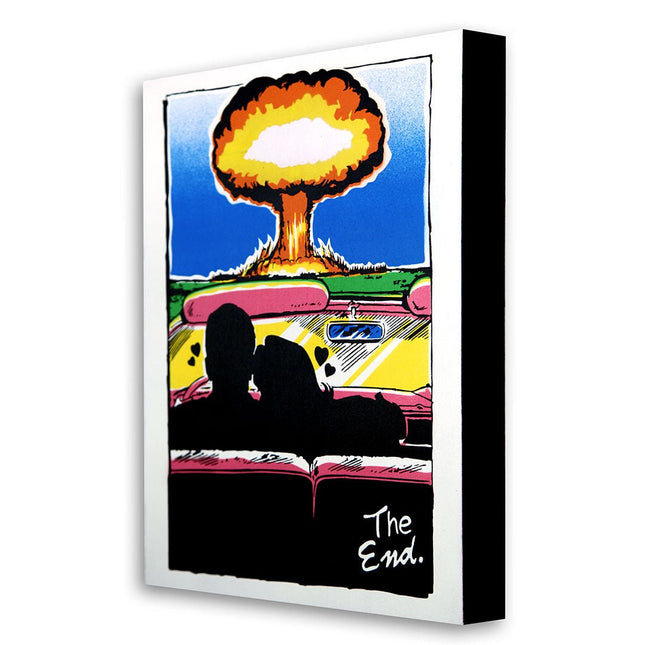
Denial- Daniel Bombardier The End of the End- Mini HPM Stencil Print by Denial- Daniel Bombardier
The End of the End- Mini, Part of the True Facts Mini Multiple Series Original Hand-Painted Multiple (HPM) on Wood Cradled Panel ready to hang by Denial Graffiti Street Artist Modern Pop Art. 2020 Signed & Numbered HPM Limited Edition of 20 Artwork Size 24x36 "My work speaks of impending doom and a lot of crass sinister themes, but that should not mean I desire this to happen at all. I hope my work would suggest only the opposite: to show the ridiculousness of it all and how we may find better solutions for the future." -Denial The End of the End Mini by Denial: Love, Apocalypse, and Satire in Street Pop Art & Graffiti Artwork The End of the End Mini is a 2020 hand-painted multiple by Canadian artist Denial, known for his fusion of satire, iconography, and subversive wit. Created as part of the True Facts Mini Multiple Series, this piece measures 24 x 36 inches and is produced on a wood cradled panel, ready to hang. Each edition in the set is an original HPM—hand-painted multiple—offering unique brushwork and embellishment over a consistent base print. Limited to 20 signed and numbered pieces, the work presents a silhouetted couple locked in a romantic embrace within a car as they overlook a mushroom cloud detonating in the distance. The scene closes with a stylized handwritten caption that simply reads The End, suggesting finality with a mix of tragedy and humor. This darkly comic juxtaposition is a hallmark of Denial’s work, perfectly situated within the visual terrain of Street Pop Art & Graffiti Artwork. Nuclear Romance and Comedic Catastrophe The imagery in The End of the End Mini plays with retro cartoon styling and Cold War era fears, placing symbols of youthful romance—vintage cars, scenic overlooks, date-night silhouettes—alongside the icon of global annihilation: the mushroom cloud. The bomb blast, rendered in vivid oranges and yellows, contrasts with the blue sky and lush green horizon, creating an unnervingly cheerful palette for a scene of planetary extinction. The couple remains indifferent, lost in their affection, suggesting either complete detachment or ironic defiance. In Street Pop Art & Graffiti Artwork, such combinations expose the contradictions in cultural storytelling, where romance and violence are often sold in the same breath. Denial uses this absurd pairing not to promote nihilism, but to provoke reflection on how society trivializes catastrophe through media and myth. Material Detail and Collector Format Each panel is painted on cradled wood, offering dimensionality and presence beyond a flat print. The edges are blacked out to create a framed effect, giving the work an object-like quality suited for both contemporary art installations and personal collections. The base image is screen printed in sharp graphic tones, but each edition is uniquely treated with hand-applied paint, drips, smears, and marks that personalize the piece. This makes every version of The End of the End Mini a singular artwork despite its shared motif. The limited edition of 20 increases its desirability within both pop art and street art collector communities, where originality and scarcity fuel long-term interest. Denial’s Role in Contemporary Satirical Expression Denial, born Daniel Bombardier, is an artist from Windsor, Ontario whose work critiques consumer culture, social absurdity, and media manipulation through a visual language rooted in propaganda design and street aesthetics. With a background in graffiti and billboard alteration, Denial transforms familiar formats—comic strips, advertising, political signage—into layered visual riddles. The End of the End Mini belongs to this ongoing narrative, using humor and horror to illustrate human contradiction. The work doesn’t encourage hopelessness but rather highlights the ridiculous normalization of disaster in pop imagery. It’s a moment frozen in beautiful denial, where intimacy and destruction merge under a blue sky, daring viewers to laugh, gasp, and rethink what they celebrate and what they ignore. In the lexicon of Street Pop Art & Graffiti Artwork, it is a postcard from the absurd future disguised as now.
$954.00
-
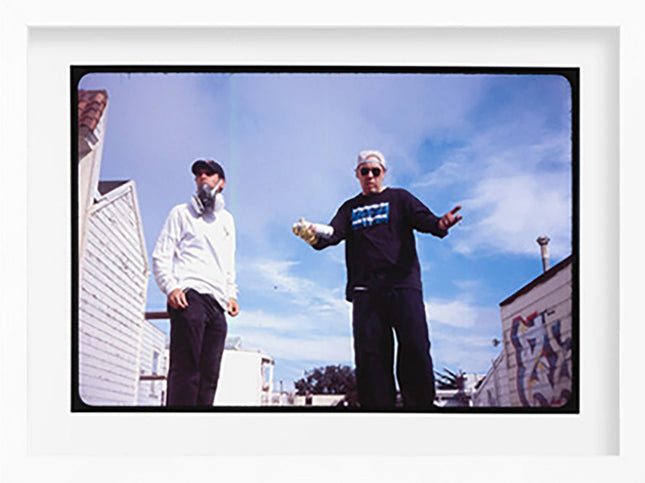
Ricky Powell Dr. Revolt and Zephyr Archival Print by Ricky Powell
Dr. Revolt and Zephyr Limited Edition Photo Archival Pigment Prints on Fine Art Paper by Ricky Powell Graffiti Street Artist Modern Pop Art. 2020 Signed Numbered & Titled by Ricky Powell's Hand Limited Edition of 75 Artwork Size 20x15 Photo Archival Pigment Print. Includes COA Signed 2nd Time by Powell. The Convergence of Street Legends: Dr. Revolt and Zephyr Through the Lens of Ricky Powell In the swirling colors and defiant lines of street pop art and graffiti artwork, authenticity and innovation stand as pillars of the movement. Among the vibrant canvases of city walls, two names emerge with a resonant echo through time: Dr. Revolt and Zephyr. These graffiti artists are not just mere painters of the urban landscape; they are storytellers, cultural commentators, and pioneers of a form that has grown from illicit beginnings to a globally recognized art movement. Their collaboration with Ricky Powell, a legendary photographer known for his candid documentation of the street and hip-hop scenes, culminates in a series of limited edition photo archival pigment prints on fine art paper that captures the essence of an era. Dr. Revolt and Zephyr: Masters of the Spray Can Dr. Revolt, with his flair for electrifying lettering and cartoon figures, has been an integral part of the graffiti scene since its upsurge in the concrete jungles of New York. His work, rife with references to pop culture and subcultural codes, encapsulates the rebellious spirit of the 1970s and 80s. Similarly, Zephyr, renowned for his distinctive wild style and influence in the graffiti movement, has left an indelible mark on the art form. Both artists have witnessed the evolution of graffiti from an underground phenomenon to a legitimate artistic pursuit, and their works are studied and revered by enthusiasts and practitioners alike. The collaboration between Dr. Revolt and Zephyr is not just a meeting of two artists but a fusion of styles that have shaped the trajectory of street art. Their combined legacy is etched onto the surfaces of New York's urban fabric and chronicled in the memories of those who have seen the city's walls transform into galleries of the street. Ricky Powell's Photographic Tribute Into this world of aerosol and rebellion steps Ricky Powell, a photographer whose lens has captured the raw and unfiltered reality of the street. In 2020, Powell released a series of limited edition prints featuring Dr. Revolt and Zephyr, a visual homage to the titans of graffiti. These prints, limited to a run of 75, offer a glimpse into the world of these artists through the candid and intimate style that Powell is celebrated for. Each piece is a 20x15 archival pigment print, a medium chosen for its longevity and ability to reproduce the subtleties of Powell's original photographs with fidelity and depth. The prints are not merely reproductions; they are artifacts of cultural significance. Each one is signed, numbered, and titled by Powell's hand, imbuing them with his presence and blessing. Accompanying the prints is a Certificate of Authenticity, also signed by Powell, assuring collectors of the print's provenance and its place within the limited edition. This series stands as a testament to the era and the enduring influence of these artists within the pantheon of modern pop art. In these prints, we see Dr. Revolt and Zephyr not just as artists but as icons, their figures composed with the same care and respect as their own works. The settings are unmistakably urban, the backgrounds filled with the textures of the city that has been both their canvas and their muse. Powell's work captures the vibrancy and the impermanence of street art, a poignant reminder of the fleeting nature of graffiti, constantly at the mercy of the elements and the changing cityscape. The limited edition photo archival pigment prints by Ricky Powell, featuring Dr. Revolt and Zephyr, bridge the gap between photography and graffiti, between the ephemeral and the eternal. These prints offer a window into the soul of street pop art and graffiti artwork, encapsulating the spirit, the history, and the visual dialogue of the streets. They are more than just images; they are a celebration of a movement, a chronicle of its pioneers, and a tribute to the indomitable spirit of street art. Ricky Powell's work ensures that the legacies of Dr. Revolt and Zephyr, and the moments they shared, are preserved against the relentless march of time, held forever in the stillness of the frame.
$812.00
-
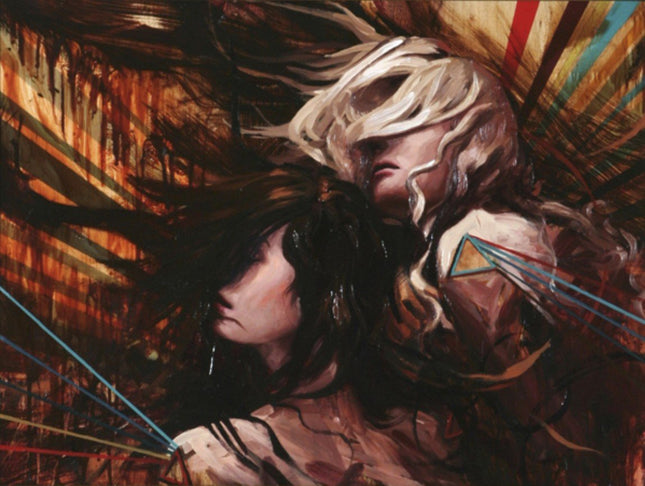
Gene Guynn The Rite of Spring Giclee Print by Gene Guynn
The Rite of Spring Artwork Giclee Limited Edition Print on Thick Fine Art Paper by Pop Culture Graffiti Artist Gene Guynn.
$217.00
-

Ron English- POPaganda Lincoln Obama 15 President Barrack Vinyl Art Sculpture by Ron English
Lincoln Obama 15 President Barrack Vinyl Art Sculpture by Ron English- POPaganda Limited Edition Collectible Sculpture Figure Fine Artwork by Graffiti Pop Street Artist. 2008 Limited Edition of 50 Artwork Size 10x15 New In Box Stamped Vinyl Fine Art Toy Figure Sculpture. Ron English- POPaganda – Abraham Obama Vinyl Sculpture in Street Pop Art & Graffiti Artwork Ron English- POPaganda’s Abraham Obama vinyl art sculpture is one of the most audacious and conceptually layered pieces in the evolution of Street Pop Art & Graffiti Artwork. Created in 2008 during the height of President Barack Obama’s first campaign, this limited edition collectible (edition of 50) merges two of America’s most culturally significant presidents—Abraham Lincoln and Barack Obama—into a singular hybrid bust. Standing 10 inches tall by 15 inches boxed, and produced in vinyl by MINDstyle, this figure embodies Ron English- POPaganda’s signature approach: visual collision, political parody, and cultural remix, all filtered through the lens of pop surrealism and graffiti-inspired fine art. The sculpture presents Obama with Lincoln’s iconic facial hair and historical attire, challenging the viewer to reexamine not only the legacy of leadership but also the collective symbols of American hope and progress. The packaging reinforces this fusion with a bold, saturated yellow and green colorway and English’s graffiti-styled hand lettering. It’s equal parts street culture artifact and fine art satire. With this work, English transforms campaign-era idealism into a collectible statement piece, collapsing timelines and creating a new icon meant to provoke, amuse, and unsettle. Visual Satire and Political Remix in 3D Form This sculpture is more than a mashup—it’s a sculptural commentary on how America constructs its heroes. By merging Lincoln, the president who ended slavery, with Obama, the first Black president of the United States, Ron English- POPaganda uses Street Pop Art’s remix culture to speak directly to race, legacy, and the mythology of leadership. The fusion is visually seamless yet conceptually jarring, forcing viewers to ask whether America’s dreams of progress are genuine or simply surface-level branding. English has long employed pop culture icons in his work—Mickey Mouse, Ronald McDonald, superheroes—manipulating them into grotesque or exaggerated versions of themselves. In Abraham Obama, however, the satire is more refined, bordering on reverence while still critiquing the idealization of political figures. It questions whether Obama’s image was being mythologized in real time, turning him into an icon before history could judge the substance of his presidency. That complexity is central to graffiti and pop-infused art: using popular imagery not to worship, but to dissect. Street Culture Meets Designer Toy Aesthetic As part of the collectible art toy movement, Abraham Obama also bridges the gap between street-level art and gallery collectible culture. The piece follows a lineage of vinyl sculpture rooted in graffiti aesthetics, lowbrow art, and limited edition consumer drops. Much like street art stickers and mural culture, these figures carry the urgency of ephemera and rebellion—but rendered in high-quality materials with gallery-level craft. The use of vinyl makes the work accessible in both material and tone, a tactile evolution of street pop's visual ethos. These types of sculptures are the three-dimensional cousins of stenciled posters and wheatpasted satire, designed to occupy the same cultural headspace while entering private collections. Like a Banksy piece pulled from a wall, Abraham Obama is designed to be portable without losing its streetwise edge. Legacy of Political Pop in Urban Visual Culture Ron English- POPaganda’s Abraham Obama is one of the most definitive statements of political remix in the contemporary art landscape. It belongs to a genre that not only challenges political narratives but also reframes how visual culture mythologizes leadership. In the hands of a graffiti pop veteran like English, the sculpture becomes more than a novelty—it becomes an archive of American hopes, contradictions, and media-driven spectacle. Within the expanding lexicon of Street Pop Art & Graffiti Artwork, Abraham Obama stands as a hybrid icon—part toy, part bust, part satire, part prayer. It encapsulates the power of street-level aesthetics to shape and reflect the nation’s deepest cultural tensions, all while making it possible to hold a piece of visual revolution right in your hands.
$500.00






